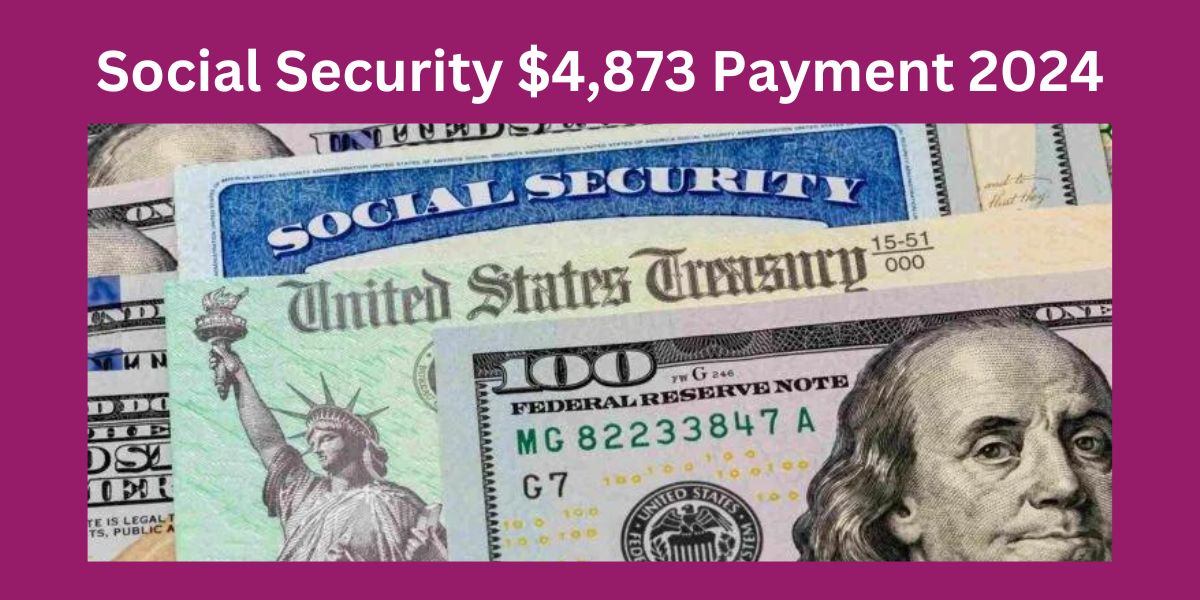Social Security benefits are a crucial part of the financial landscape for many Americans, especially as they age. The anticipation of receiving a Social Security payment can feel like waiting for a long-awaited gift. For 2024, understanding the payment schedule and eligibility criteria is key to making the most out of your benefits. Whether you’re just entering the eligible age bracket or you’re waiting to maximize your benefits, knowing when and how much you’ll receive is essential.
Understanding the Social Security Payment System
Let’s start with the basics. Social Security is a program that most of us have been contributing to throughout our working lives. It’s like a safety net, catching us when we retire or can no longer work due to disability. But the system isn’t as simple as just reaching a certain age and cashing in. There’s a lot more to it, including when you’re paid and how much you get. So, let’s dive into what you need to know about the 2024 payment schedule and eligibility criteria.
What is Social Security?
Social Security is a government program that provides financial assistance to eligible individuals. The primary beneficiaries are retirees, but the program also supports disabled individuals and survivors of deceased workers. The funds for Social Security come from payroll taxes, which means that if you’ve ever worked and paid taxes, you’ve likely contributed to this program.
The Importance of Social Security in Retirement
For many Americans, Social Security forms the bedrock of their retirement income. It’s designed to replace a portion of your pre-retirement income, helping you maintain your standard of living after you stop working. However, Social Security was never meant to be the sole source of income in retirement, but rather to supplement other savings and investments.
Payment Schedule for 2024
Now that we’ve covered what Social Security is and its importance, let’s break down the payment schedule for 2024. Understanding this schedule can help you plan your finances better and know exactly when to expect your payment.
The Three Waves of Payment
In 2024, the Social Security Administration (SSA) will distribute payments in three waves each month. The wave you fall into depends on your birth date. Let’s explore each wave in detail:
First Wave (July 10th): Born Between the 1st and the 10th
If your birthday falls between the 1st and the 10th of any month, you will receive your Social Security payment on July 10th, 2024. This wave is the earliest, so if you’re eager to get your hands on that check, being born early in the month has its perks!
Second Wave (July 17th): Born Between the 11th and the 20th
Those with birthdays between the 11th and the 20th will see their payments hit on July 17th, 2024. This middle wave means you’ll get your payment right in the middle of the month, which can be convenient for managing mid-month expenses.
Third Wave (July 24th): Born Between the 21st and the 31st
Finally, if you were born between the 21st and the 31st, your payment will arrive on July 24th, 2024. While you might have to wait a bit longer than others, knowing the exact date can help you plan your budget accordingly.
Why Does the SSA Use a Staggered Payment System?
You might be wondering, why doesn’t everyone just get paid on the same day? The staggered system helps the SSA manage the sheer volume of payments they need to process each month. It also helps reduce the risk of system overloads, ensuring that everyone gets their money on time without any delays.
Eligibility for Social Security Benefits
Knowing when you’ll get paid is one thing, but understanding if you’re eligible for Social Security benefits—and how much you’ll get—is another. Let’s go over the eligibility requirements and how to maximize your benefits.
Who is Eligible for Social Security?
To be eligible for Social Security benefits, you generally need to have earned 40 credits over your working life. Typically, you can earn up to four credits per year, so most people qualify after 10 years of work. You also need to be at least 62 years old to start receiving retirement benefits.
Early Retirement vs. Full Retirement Age
While you can start receiving benefits at age 62, this is considered early retirement, and your monthly payments will be reduced. The Social Security Administration has a concept called Full Retirement Age (FRA), which is the age at which you can receive 100% of your benefits. For those born in 1960 or later, the FRA is 67.
What Happens if You Claim Early?
If you decide to claim Social Security benefits at age 62, your monthly payment will be reduced permanently. For instance, if your FRA is 67 and you claim at 62, your benefits could be reduced by up to 30%. This reduction is because you’ll be receiving payments for a longer period, so the SSA spreads out your benefit over more years.
Waiting Until Age 70 to Maximize Benefits
On the flip side, if you wait until age 70 to claim your benefits, you’ll receive a higher monthly payment. The SSA increases your benefits by about 8% for each year you delay claiming past your FRA, up to age 70. This increase can make a significant difference in your monthly income, especially if you’re in good health and expect to live longer.
Disability Benefits: What If You Can’t Work?
Social Security isn’t just for retirees. If you’re unable to work due to a disability, you may be eligible for Social Security Disability Insurance (SSDI). To qualify, you must have a medical condition that meets the SSA’s definition of disability and have worked long enough in jobs covered by Social Security.
How Much Can You Expect to Receive?
The big question on everyone’s mind is, how much will I actually get? The amount you receive depends on various factors, including your earnings history, the age at which you start claiming benefits, and whether you’re eligible for spousal benefits.
Average vs. Maximum Benefits
In 2024, the average monthly Social Security payment is expected to be around $1,800. However, the maximum benefit for those who retire at full retirement age is significantly higher, potentially reaching up to $4,873 per month. This maximum amount is for individuals who have consistently earned a high income throughout their working life.
Spousal Benefits: What If You’re Married?
If you’re married, you might be eligible for spousal benefits, which can be up to 50% of your spouse’s full retirement amount. This can be particularly beneficial if one spouse was a lower earner or didn’t work outside the home.
The Impact of Delaying Benefits
As mentioned earlier, delaying your benefits can result in a higher monthly payment. But just how much more can you get? Let’s say your full retirement benefit is $2,000 per month. If you wait until age 70 to claim, that amount could increase to about $2,640 per month—an extra $7,680 per year!
How to Apply for Social Security Benefits
Applying for Social Security benefits is a straightforward process, but it’s essential to know what to expect and what information you’ll need.
When Should You Apply?
You should apply for Social Security benefits about three months before you want your payments to start. This allows enough time for the SSA to process your application and ensures you’ll start receiving benefits on time.
The Application Process
You can apply for Social Security benefits online, by phone, or in person at your local Social Security office. The online application is the easiest and most convenient option. You’ll need to provide information about your work history, earnings, and any family members who might be eligible for benefits.
Documents You’ll Need
When applying, be prepared to provide several documents, including:
- Your Social Security number
- Your birth certificate
- Proof of U.S. citizenship or lawful alien status
- Military discharge papers (if applicable)
- W-2 forms or self-employment tax returns for the past year
What Happens After You Apply?
After you’ve submitted your application, the SSA will review it and contact you if they need any additional information. Once your application is approved, you’ll receive a letter in the mail with details about your benefit amount and when you can expect your first payment.
Planning for Your Social Security Payments
Getting the most out of your Social Security benefits requires some planning. Whether it’s deciding when to start receiving benefits or budgeting for your monthly expenses, planning ahead can make a big difference in your financial security during retirement.
Creating a Retirement Budget
One of the first steps in planning for Social Security payments is to create a retirement budget. Start by estimating your monthly expenses, including housing, utilities, food, healthcare, and leisure activities. Then, compare these expenses to your expected Social Security benefits and any other sources of income.
Supplementing Your Social Security Income
As mentioned earlier, Social Security was never intended to be your sole source of income in retirement. Consider other ways to supplement your income, such as part-time work, investments, or retirement savings accounts like a 401(k) or IRA.
Managing Your Benefits Wisely
Once you start receiving Social Security benefits, managing them wisely is crucial. Consider setting up direct deposit to ensure your payments arrive on time and without hassle. Additionally, be mindful of how much you withdraw from any retirement accounts to avoid depleting your savings too quickly.
The Future of Social Security
While Social Security has been a reliable source of income for generations, there are ongoing discussions about its future. As the population ages and the ratio of workers to retirees decreases, some worry about the long-term sustainability of the program.
Potential Changes to Social Security
There are several proposals to ensure the future of Social Security, including raising the retirement age, increasing payroll taxes, or modifying the benefit formula. While no changes are imminent, staying informed about potential shifts in the program can help you plan for the future.
What Can You Do to Prepare?
While it’s impossible to predict the future, you can take steps to prepare for potential changes to Social Security. This might include saving more in your retirement accounts, considering alternative sources of income, or working a few extra years before retiring.
Conclusion
Navigating the world of Social Security can seem daunting, but with a clear understanding of the payment schedule and eligibility requirements, you can make informed decisions that will benefit you in the long run. Whether you’re planning to retire early or waiting to maximize your benefits, knowing what to expect from your Social Security payments in 2024 is crucial.
Remember, the timing of your payments depends on your birth date, and the amount you receive can vary based on when you start claiming benefits. By planning ahead, understanding your options, and managing your benefits wisely, you can enjoy a more secure and comfortable retirement.
FAQs
1. What happens if I start claiming Social Security benefits at age 62?
If you start claiming benefits at age 62, your monthly payments will be permanently reduced by up to 30% compared to waiting until full retirement age. This reduction is because you’ll be receiving benefits for a longer period.
2. How can I maximize my Social Security benefits?
To maximize your benefits, consider waiting until age 70 to start claiming. Each year you delay past your full retirement age increases your benefit by about 8%, resulting in a higher monthly payment.
3. What if I’m eligible for spousal benefits?
If you’re married, you may be eligible for spousal benefits, which can be up to 50% of your spouse’s full retirement amount. This can be beneficial if one spouse was a lower earner or didn’t work outside the home.
4. Can I work while receiving Social Security benefits?
Yes, you can work while receiving Social Security benefits, but your benefits may be temporarily reduced if you earn more than the annual limit. Once you reach full retirement age, your benefits will no longer be reduced, regardless of how much you earn.
5. How do I apply for Social Security benefits?
You can apply for Social Security benefits online, by phone, or in person at your local Social Security office. It’s recommended to apply about three months before you want your payments to start to ensure timely processing.










